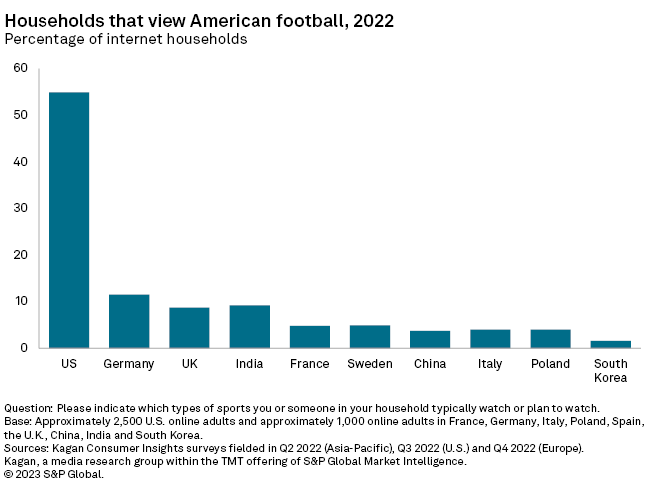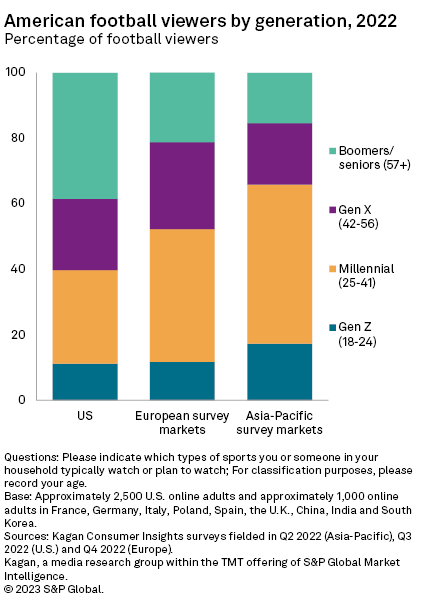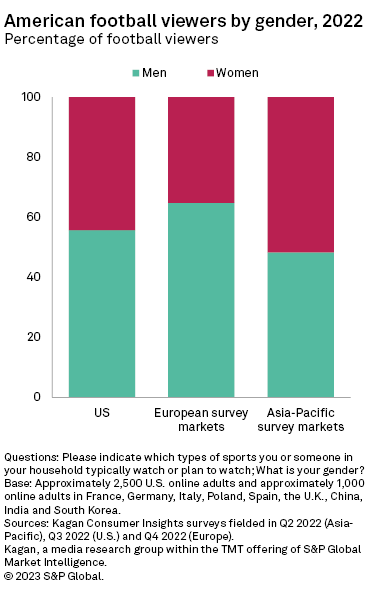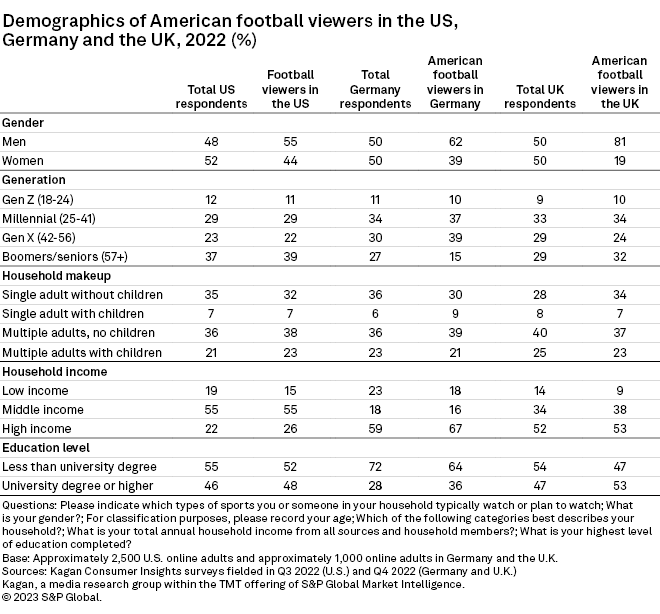S&P Global Offerings
Featured Topics
Featured Products
Events
S&P Global Offerings
Featured Topics
Featured Products
Events
S&P Global Offerings
Featured Topics
Featured Products
Events
Banking & Capital Markets
Economy & Finance
Energy Transition & Sustainability
Technology & Innovation
Podcasts & Newsletters
Banking & Capital Markets
Economy & Finance
Energy Transition & Sustainability
Technology & Innovation
Podcasts & Newsletters
S&P Global Offerings
Featured Topics
Featured Products
Events
Research — 23 Feb, 2023

By Seth Shafer
With more than 100 million U.S. viewers expected to have tuned in to Super Bowl LVII on Feb. 12 to watch the Kansas City Chiefs defeat the Philadelphia Eagles, the Super Bowl remains one of the few TV events that can draw such a massive crowd. Unlike the 2022 World Cup final, which FIFA claimed was watched by about 1.5 billion viewers globally, watching the U.S. version of football is still primarily an American pastime.
Kagan's Consumer Insights surveys of online adults conducted in 2022 in the U.S. and representative markets in Europe (France, Germany, Italy, Poland, Sweden and the U.K.) and Asia-Pacific (China, India and South Korea) show U.S. households were unsurprisingly far more likely than those in other markets to report watching American football, at 55%. While 12% of households in Germany said they watch American football with the U.K. and India at 9% of households, other surveyed markets ranged from 2% to 5%.
The National Football League Inc. has scheduled upcoming games in both the U.K. and Germany in 2023, two markets that have been rumored to be on the short list to land a franchise if the NFL expands to Europe.

The ages of survey respondents who reported watching American football highlighted interesting dynamics for U.S. sports organizations, such as the NFL, that are eyeing international expansion. With 55% of total respondents in the U.S. reporting watching football, those viewers were distributed across generations. Boomers/seniors (ages 57 and up) represented the single largest group of viewers, at 39%.
In combined European and Asia-Pacific markets surveyed, however, American football viewers were far younger, as Gen Zers and millennials together accounted for about 55% to 65% of the football viewing audience.

Football viewers by gender show interesting divergences as well. In the U.S., 56% of survey takers that watch football were men, and that number rose to 65% in European markets surveyed. In the Asia-Pacific markets surveyed, men made up only 48% of football viewers.

Digging deeper into American football viewer demographics in the U.S., Germany and the U.K. showed more similarities than differences. A few stand out, such as the U.K. audience heavily skewing toward men, at 81%. Football viewers were more likely to have a university degree or higher than total survey respondents in each market and were also more likely to come from middle- and high-income households.

Consumer Insights is a regular feature from Kagan, a media research group within S&P Global Market Intelligence's TMT offering, providing exclusive research and commentary.
This article was published by S&P Global Market Intelligence and not by S&P Global Ratings, which is a separately managed division of S&P Global.
